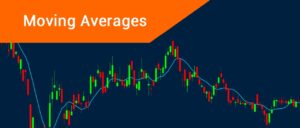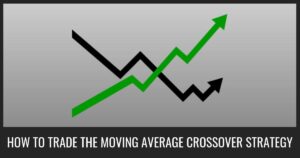In the fast-paced world of financial markets, technical analysis plays a crucial role for traders seeking to identify trends and make informed decisions. A key tool in this analysis is the moving average (MA), which smooths out price fluctuations to reveal the underlying trend. However, traditional MAs suffer from a drawback – lag. They react slowly to price changes, potentially leading to missed opportunities.
The Double Exponential Moving Average (DEMA) emerges as a solution, aiming to reduce lag and provide a more responsive picture of price movements. Let’s delve deeper into the world of DEMA, exploring its mechanics, applications, and the nuances traders should consider.
Demystifying the DEMA: A Two-Step Smoothing Process
The name “double exponential” might suggest a complex calculation involving two layers of exponential smoothing. However, the reality is slightly different. DEMA builds upon the concept of the Exponential Moving Average (EMA) but with a twist to address its lag.
Understanding the Exponential Moving Average (EMA):
A traditional EMA assigns higher weights to recent prices compared to older ones. This weighting ensures the average reflects the latest price movements more heavily. The EMA for a specific period (t) is calculated as follows:
EMA(t) = (α * Price(t)) + (1 - α) * EMA(t-1)
Here, α (alpha) is the smoothing factor, typically ranging from 0 to 1. A higher alpha gives more weight to the current price, resulting in a more reactive EMA but prone to noise. Conversely, a lower alpha creates a smoother line but with increased lag.
The DEMA Advantage: Addressing Lag with a Double Play
The DEMA tackles the lag issue by employing a two-step process:
- Calculating an initial EMA (EMA1): This first EMA is calculated using the standard EMA formula mentioned earlier.
- Smoothing the EMA (EMA2): A second EMA is computed, but instead of using the actual price, EMA1 itself is used as the input. This essentially smooths out the initial EMA, reducing its volatility.
- The DEMA Magic: The final step involves incorporating the difference between EMA1 and EMA2. The DEMA is calculated as:
DEMA(t) = EMA1(t) + α * [EMA1(t) - EMA2(t)]
By subtracting the difference between the two EMAs from EMA1, the DEMA effectively removes some of the lag associated with the initial EMA. This results in a smoother line that reacts more quickly to price changes compared to a traditional EMA with the same smoothing factor.
Putting the DEMA to Work: Applications in Trading
Traders utilize DEMA for various purposes, including:
- Identifying Trends: Like other moving averages, DEMA helps visualize the overall price direction. An upward sloping DEMA suggests an uptrend, while a downward slope indicates a downtrend.
- Spotting Trend Reversals: When the price crosses above or below the DEMA, it can signal a potential change in trend direction. A bullish crossover occurs when the price rises above the DEMA, and a bearish crossover happens when the price falls below the DEMA.
- Adding Confirmation: DEMA can be combined with other technical indicators to strengthen trading signals. For instance, a bullish crossover on the DEMA coinciding with increased trading volume might suggest a more reliable uptrend continuation.
- Filtering Out Noise: By being more responsive than traditional MAs, DEMA can help traders avoid getting whipsawed by short-term price fluctuations, allowing them to focus on the underlying trend.
DEMA: A Few Considerations for Traders
While DEMA offers advantages, it’s essential to be aware of its limitations:
- Choosing the Right Smoothing Factor (α): The selection of α significantly impacts the DEMA’s responsiveness. A higher alpha leads to a more reactive line but with increased noise. Conversely, a lower alpha reduces noise but increases lag. Experimentation and backtesting are crucial to find the optimal alpha for your trading style and market conditions.
- Not a Crystal Ball: Like any technical indicator, DEMA is not a foolproof predictor of future price movements. Past performance is not necessarily indicative of future results.
- Confirmation is Key: DEMA signals should ideally be corroborated by other technical indicators or price patterns to enhance their reliability.
- Overreliance can be Detrimental: Focusing solely on DEMA can lead to missed opportunities or premature exits. It’s crucial to consider other aspects of technical and fundamental analysis for well-rounded trading decisions.
Beyond the Basics: Advanced DEMA Techniques
- Multiple DEMAs: Using multiple DEMAs with different lengths can provide a more comprehensive view of the trend. A shorter-term DEMA can capture faster price movements, while a longer-term DEMA can reveal the underlying long-term trend. The interaction between these DEMAs can offer valuable insights on trend strength and potential turning points.
- Dynamic Alpha: Traders can experiment with dynamically adjusting the smoothing factor (α) based on market volatility. During volatile periods, a lower alpha might be preferred to reduce noise, while calmer markets could benefit from a higher alpha for quicker response to price changes.
- DEMA Divergences: Similar to other moving averages, DEMA divergences can offer clues about potential trend reversals. A bullish divergence occurs when the price makes a lower low while the DEMA creates a higher low, suggesting a weakening downtrend and a possible price reversal. Conversely, a bearish divergence happens when the price forms a higher high while the DEMA creates a lower high, indicating a potential end to an uptrend.
Combining DEMA with Other Technical Indicators
The true power of DEMA lies in its synergy with other technical indicators. Here are some popular combinations:
- DEMA and Relative Strength Index (RSI): The RSI measures price momentum. Combining a bullish DEMA crossover with an RSI rising above 30 can strengthen the uptrend confirmation.
- DEMA and Moving Average Convergence Divergence (MACD): The MACD highlights trend strength and potential reversals. A bullish DEMA crossover aligned with a MACD buy signal (when the MACD line crosses above the signal line) can provide a strong buy signal.
- DEMA and Bollinger Bands: Bollinger Bands measure price volatility. A DEMA used in conjunction with Bollinger Bands can help identify potential breakouts or squeezes, indicating increased volatility or consolidation phases.
The Final Word: DEMA – A Valuable Tool in the Trader’s Arsenal
The Double Exponential Moving Average offers a valuable tool for technical analysis. By addressing the lag associated with traditional moving averages, DEMA provides a more responsive picture of the underlying trend. However, it’s crucial to remember that DEMA is just one piece of the puzzle.
Traders should use it in conjunction with other indicators, sound risk management practices, and a comprehensive understanding of market dynamics to make informed trading decisions. By effectively utilizing DEMA, traders can gain a valuable edge in navigating the ever-changing world of financial markets.
Let’s Manage Your Forex Funds With Fx Pips Guru!
Fx Pips Guru is a forex fund management company managing client’s funds based on monthly profit share. Let’s do Live Chat with our experts.




